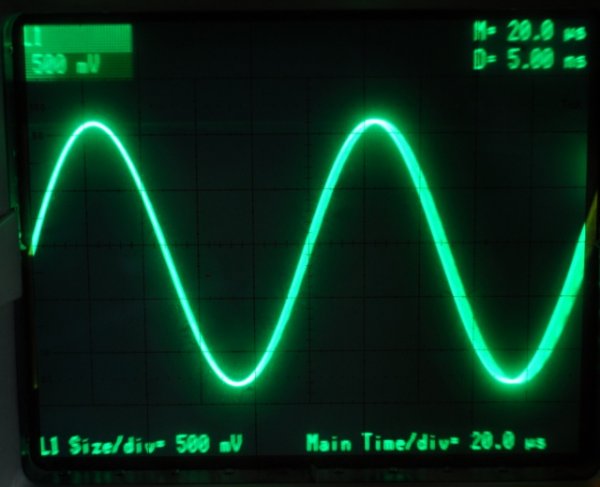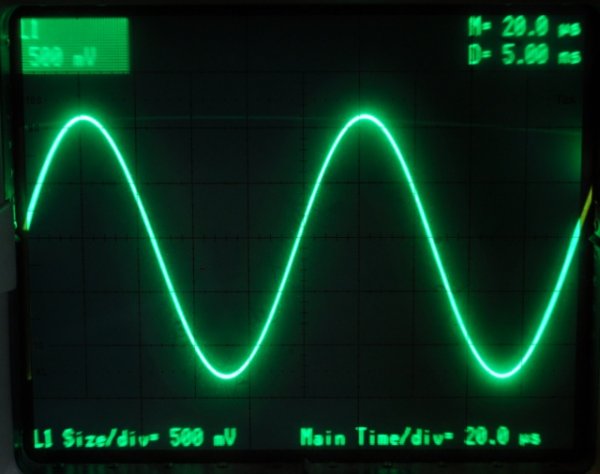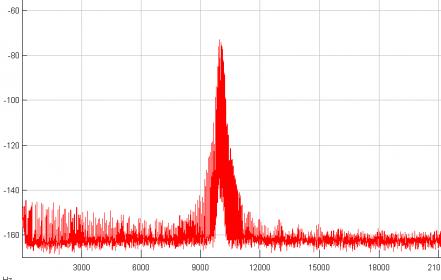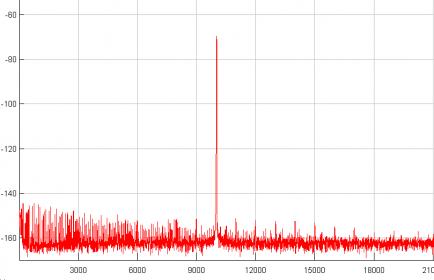Totaldac Reference D1
- Thread starter wizard
- Start date
You are using an out of date browser. It may not display this or other websites correctly.
You should upgrade or use an alternative browser.
You should upgrade or use an alternative browser.
The name is somehow misleading. It is a digital preamp, with a reclocking feature.
Not really. A preamp (digital or analog) has analog outputs. A digital preamp is basically a dac with volume control and possibly analog inputs (that may or may not do A/D conversion).
This is a digital reclocked / converter / volume control.
What you are talking about is an analog preamp with a built in DAC. A different cathegory altogether. This is a digital preamp with digital inputs and outputs. It allows both volume control and input switching.
There is no offical definition of what constitutes a digital preamp. But it is generally understood to be a device with analog outs that can drive a poweramp. Many DAC manufacturers refer to their DACs with volume control as digital preamps. This TotalDAC all digital device is a bit of a rarery, but calling it a digital preamp would be more confusing than calling it a reclocker. I think they should have just called it a 2 channel digital processor and then just explain what it does.
I'm sure you could call it "pre-dac with volume". Problem solved.The name is somehow misleading. It is a digital preamp, with a reclocking feature.
Last edited:
I have just added some measurements online to show how the D1-digital reclocker attenuates the jitter:
http://www.totaldac.com/D1-digital-eng.htm
AD1955 eval board with high jitter and without D1-digital reclocker:

AD1955 eval board with high jitter and with D1-digital reclocker:

updated rear photo:

http://www.totaldac.com/D1-digital-eng.htm
AD1955 eval board with high jitter and without D1-digital reclocker:

AD1955 eval board with high jitter and with D1-digital reclocker:

updated rear photo:

Last edited:
So in the first picture you're showing two periods of a 10kHz sinewave with at least +/-2000nS of jitter at 5kHz. I've never seen such a huge amount from any DAC - what's the receiver chip being used?
So in the first picture you're showing two periods of a 10kHz sinewave with at least +/-2000nS of jitter at 5kHz. I've never seen such a huge amount from any DAC - what's the receiver chip being used?
A CS8416 receiver is used on the AD1955 eval board. Yes it is voluntarily a very high jitter so it is visible even on the DAC analog output at the oscilloscope.
Last edited:
The transport jitter is deliberately made very high for the demo, as explained on the web site. The web site shows also the spectrum.
Nice use of an old school CRT scope! The new Agilents have some pretty cool trace persistence features, not sure if you have looked at them
Nice use of an old school CRT scope! The new Agilents have some pretty cool trace persistence features, not sure if you have looked at them
Yes the CRT scope can be emulated on a digital scope, but the FFT view of jitter is even more interesting
AD1955 eval baord with very high jitter source:

AD1955 eval board with very high jitter cleaned:

Last edited:
What is the difference between D1 Single & Dual DACs sonically if using only single-ended/unbalanced outputs?
Why is the need to buy special XLR->RCA adapter if the DAC has RCA outputs?
While 90% of my material is PCM, given the rise of interest now in DSD downloads I would like to know how MPD-5 and TotalDAC D1 compare (single or dual or both) on DSD material..
Let's assume that the source is a computer and in the case of TotalDAC there is a conversion to 176/24 using SACD plug-in (foobar)
MPD-5 is a DSD DAC, and also future-proof.
How upgradable is TotalDAC?
Was the 10 seconds delay during sample rate switch issue - reported on this thread - resolved until now?
Why is the need to buy special XLR->RCA adapter if the DAC has RCA outputs?
While 90% of my material is PCM, given the rise of interest now in DSD downloads I would like to know how MPD-5 and TotalDAC D1 compare (single or dual or both) on DSD material..
Let's assume that the source is a computer and in the case of TotalDAC there is a conversion to 176/24 using SACD plug-in (foobar)
MPD-5 is a DSD DAC, and also future-proof.
How upgradable is TotalDAC?
Was the 10 seconds delay during sample rate switch issue - reported on this thread - resolved until now?
Theres no 10 second delay. Re read what I wrote. It has to do with a long fifo buffer that attenuates jitter. Most people think low jitter is a good thing, so its still there. 
As I previously mentioned in the thread. I had the playback mpd5 with usb-x and I have lots of dsd rips into .dff files. There is no direct comparison between the 2 players because the playback needs a pre amp and totaldac doesn't. I lived with the mpd5 for a full year in the same sytem. So I've got a good handle on it.
As far as pcm, the totaldac is superior to anything I've heard which includes the playback mpd5. The first thing people ask me when they hear excellent redbook: "Is that hi-rez." Can really good dsd via playback mpd5 compare to the best pcm on totaldac? Maybe, who cares? If you convert it to PCM and play it on the totaldac, it will sound as good I bet. I can only go off of memory since a direct comparison is impossible. There's no question that pcm is better on totaldac, IMO.
As I previously mentioned in the thread. I had the playback mpd5 with usb-x and I have lots of dsd rips into .dff files. There is no direct comparison between the 2 players because the playback needs a pre amp and totaldac doesn't. I lived with the mpd5 for a full year in the same sytem. So I've got a good handle on it.
As far as pcm, the totaldac is superior to anything I've heard which includes the playback mpd5. The first thing people ask me when they hear excellent redbook: "Is that hi-rez." Can really good dsd via playback mpd5 compare to the best pcm on totaldac? Maybe, who cares? If you convert it to PCM and play it on the totaldac, it will sound as good I bet. I can only go off of memory since a direct comparison is impossible. There's no question that pcm is better on totaldac, IMO.
What is the difference between D1 Single & Dual DACs sonically if using only single-ended/unbalanced outputs?
Why is the need to buy special XLR->RCA adapter if the DAC has RCA outputs?
While 90% of my material is PCM, given the rise of interest now in DSD downloads I would like to know how MPD-5 and TotalDAC D1 compare (single or dual or both) on DSD material..
Let's assume that the source is a computer and in the case of TotalDAC there is a conversion to 176/24 using SACD plug-in (foobar)
MPD-5 is a DSD DAC, and also future-proof.
How upgradable is TotalDAC?
Was the 10 seconds delay during sample rate switch issue - reported on this thread - resolved until now?
Thanks, dallasjustice
Do you have single or dual version?
Do you work balanced or unbalanced? Did you try both?
The 10-seconds delay you described as the time required for the device to lock in on incoming signal,
it is indeed too long. I rarely mix single songs from different albums, but sometimes I do.
Sound-wise, you said that the MPD-5 lacked the low-detail resolution, was it in specific frequency region?
How would you describe other sound characteristics, e.g. soundstage?
One interesting feature of upsampling players (like MPD-5) is that they are more forgiving to the bad recordings, I listen frequently to blues and some classic rock titles, and there are plenty of such records..
How TotalDAC behaves here?
Sorry for the investigation
Michael
Do you have single or dual version?
Do you work balanced or unbalanced? Did you try both?
The 10-seconds delay you described as the time required for the device to lock in on incoming signal,
it is indeed too long. I rarely mix single songs from different albums, but sometimes I do.
Sound-wise, you said that the MPD-5 lacked the low-detail resolution, was it in specific frequency region?
How would you describe other sound characteristics, e.g. soundstage?
One interesting feature of upsampling players (like MPD-5) is that they are more forgiving to the bad recordings, I listen frequently to blues and some classic rock titles, and there are plenty of such records..
How TotalDAC behaves here?
Sorry for the investigation
Michael
I have the dual. I don't know about single. The d1 is designed for maximum freedom to the end user when it comes to filters; min phase, linear phase etc. HQplayer is the answer. I select appropriate filters, oversampling and dither depending on the recording. For example, HRX recording don't need any changes whereas older redbook can sound much better. Why wait a year or never for the manufacturer to come up with one size fits all apodizing filter?
Thanks, dallasjustice
Do you have single or dual version?
Do you work balanced or unbalanced? Did you try both?
The 10-seconds delay you described as the time required for the device to lock in on incoming signal,
it is indeed too long. I rarely mix single songs from different albums, but sometimes I do.
Sound-wise, you said that the MPD-5 lacked the low-detail resolution, was it in specific frequency region?
How would you describe other sound characteristics, e.g. soundstage?
One interesting feature of upsampling players (like MPD-5) is that they are more forgiving to the bad recordings, I listen frequently to blues and some classic rock titles, and there are plenty of such records..
How TotalDAC behaves here?
Sorry for the investigation
Michael
Last edited:
The d1 is designed for maximum freedom to the end user when it comes to filters; min phase, linear phase etc. HQplayer is the answer. I select appropriate filters, oversampling and dither depending on the recording.
I did not understand, can you create/download your/new filters like in MSB?
msb like almost all other dacs force you into an oversampling\filter regime. Totaldac is a true nos dac. You can try hqplayer for free and decide for yourself if you like it.
I did not understand, can you create/download your/new filters like in MSB?
Why is the need to buy special XLR->RCA adapter if the DAC has RCA outputs?
The D1-dual has a special XLR output which uses two DACs whereas the D1-single uses one DAC for a RCA output. So you will get the best sound from the D1-dual if you use the XLR output. If your amplifier has only RCA inputs you can use XLR to RCA adaptors to make a true balanced to unbalanced conversion. It can be transformer based, it can also be active and it can be other solutions.
I would like to know how MPD-5 and TotalDAC D1 compare (single or dual or both) on DSD material..
Usually people like very much the sound they get from a DSD file converted to pcm by the PC player and then sent to a D1-dual. In this case they get the Totaldac D1 sound quality. They don't need a DSD DAC anymore. The computer will accept most formats, even future formats unknown today, and then the computer converts to a natural format like pcm if necessary. DSD in not better than high rez pcm for non-sigma-delta DAC, direct pcm or DSD converted to pcm are ideal. DSD just embedds the sigma-delta modulation so that the sigma-delta DAC doesn't have to do it internally, it is useless for a R2R DAC.
Was the 10 seconds delay during sample rate switch issue - reported on this thread - resolved until now?
Yes it takes much less than 10seconds, this has been improved and the fifo memory increases so much the sound.
Vincent,
Thanks, I understand what you're saying despite the heavy "marketing" of DSD these days
dallasjustice,
so you're upsampling the signal on the PC now before sending to TotalDAC?
Thanks, I understand what you're saying despite the heavy "marketing" of DSD these days
dallasjustice,
so you're upsampling the signal on the PC now before sending to TotalDAC?
Similar threads
- Replies
- 36
- Views
- 5K
- Replies
- 37
- Views
- 8K
- Replies
- 0
- Views
- 2K
| Steve Williams Site Founder | Site Owner | Administrator | Ron Resnick Site Owner | Administrator | Julian (The Fixer) Website Build | Marketing Managersing |










